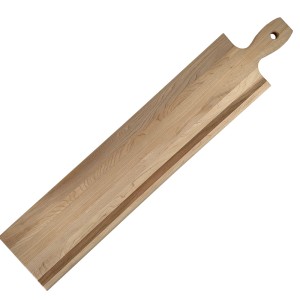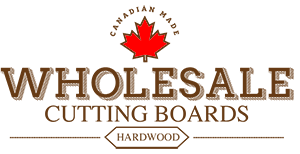Blog
Tips and Tricks of Mastering the Cheese Charcuterie Board
A show-stopping cheese Charcuterie Board

Our Cheese Charcuterie Board, meticulously crafted in Canada, elevates your culinary creations to new heights.
rie board is a feat that wows the eyes and taste buds of your guests. From casual gatherings to some very formal soirees, the art of the cheese charcuterie board can truly bring any occasion—and your hosting skills—into a whole new stratosphere. Here, some of the major tips and tricks for creating the perfect board are outlined, along with delicious examples and expert references.
The Right Cheeses for the Occasion
Any great charcuterie board has to have a killer cheese selection. You’ll want a variety of textures and flavors to keep things interesting for your guests. Consider including these categories in your selection:
Soft Cheeses: Think creamy Brie or Camembert. These rich, spreadable cheeses give a feel of luxury in the mouth.
Semi-Hard Cheeses: This would make Gouda or Manchego, though much firmer in texture, still slicable. Hard Cheeses: This would be an aged Cheddar or Parmesan to cut into with softer cheeses and provide sharp, intense flavor. Blue Cheeses: For instance, make a statement with a Roquefort or Gorgonzola. Their pungent, tangy profiles really add another dimension.
Sample selection:
Brie: Soft, creamy mild.
Gouda: Semi-hard, somewhat sweet, and nutty.
Aged Cheddar: Hard, sharp, and tangy.
Roquefort: Blue, pungent, and tangy.
Accoutrements and Pairings
Cheese alone isn’t enough to make for a memorable charcuterie board. The right accoutrements can enhance the flavors and create a wonderful cutting board.
Meats like Prosciutto, salami, and chorizo are classic choices that pair with cheese.
Fruits and Vegetables: Fresh, sweet fruits—grapes, apples, or even fresh figs add a nice contrasting flavor to the savory cheesiness. Add some crunchy vegetables like cherry tomatoes and slices of bell pepper for some variety.
Nuts and Olives: Almonds, walnuts, and olives add texture and salty flavor.
Crackers and Bread: A combination of crackers with sliced baguette offers both texture and flavor differences to be experimented on by your guests.
Example Pairings:
Brie with apple slices and honey.
Gouda with almonds and dried apricots.
Aged Cheddar with crusty baguette and prosciutto.
Roquefort with walnuts and fresh figs.
Presentation Matters of the Cheese Charcuterie Board
Not only should the charcuterie board tastes really good, but it should also be eye candy. A pretty board speaks a thousand words and more.
Board Selection: Choose a board large enough to hold all of your items without feeling crowded. Wooden Boards, marble slabs, and slate platters are great choices for this.
Setup: Start by displaying the cheeses first on the board, spaced out. Add meats followed by folding or rolling them to enhance the look of the board. Finish with fruits, vegetables, nuts, and crackers. Then add some small bowls of olives or dips.
Color and Texture: Have a good mix of both; include shape and size varieties for eye-catching contrast.
The Art of Beautiful Boards:
Fresh herbs like rosemary or thyme make great garnishes.
Seasonal fruits and vegetables of distinct colors
Don’t be afraid to mix and match different textures and flavors.
Expert Tips and Tricks
These are some expert tips to really master the art of the cheese charcuterie board:
Temperature Matters: Cheese tastes best at room temperature. It is best taken from the refrigerator an hour in advance.
Label your Cheeses: You can add small signs or labels to help your guests with the various cheeses so that they make good choices.
Wine Pairing: Offer many wines to complement your cheeses. For example, pair Brie with Chardonnay, Gouda with Merlot, Aged Cheddar with Cabernet Sauvignon, and Roquefort with Sauternes.
References and Further Reading:
“Cheese: A Connoisseur’s Guide to the World’s Best” by Max McCalman
“The Art of the Cheese Plate” by Tia Keenan
“Cheese & Charcuterie Board Fundamentals” by The Cheese Society—online resource
When all is said and done
A charcuterie cheese board brings together creativity with fine foods. Follow these tips and hacks, and you are sure to be on your way to being that master of the charcuterie board, impressing your guests with ease, and making any event special. So gather your favorite cheeses, curate your delectable accompaniments selection, and start building your perfect board. Happy hosting!
